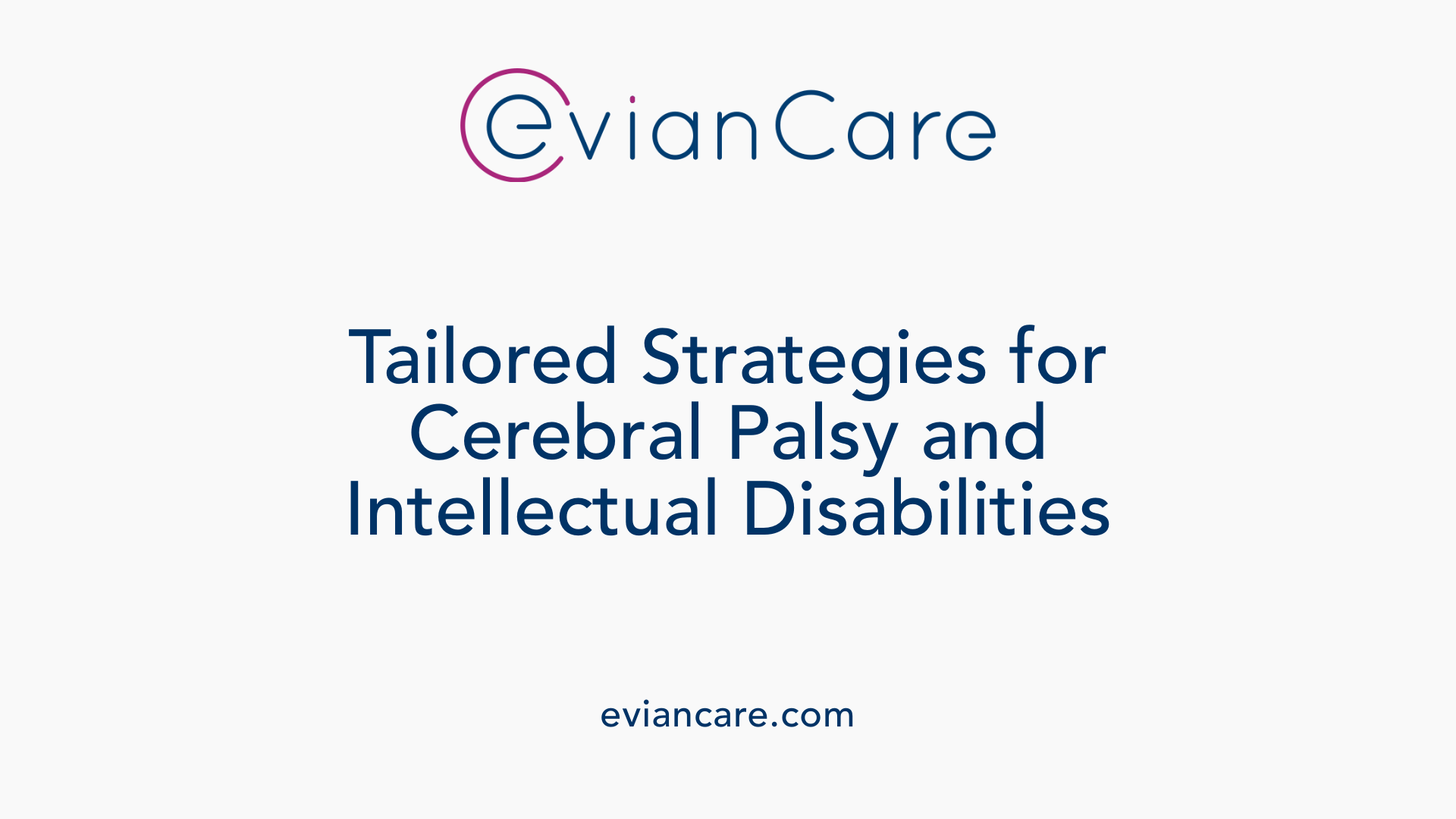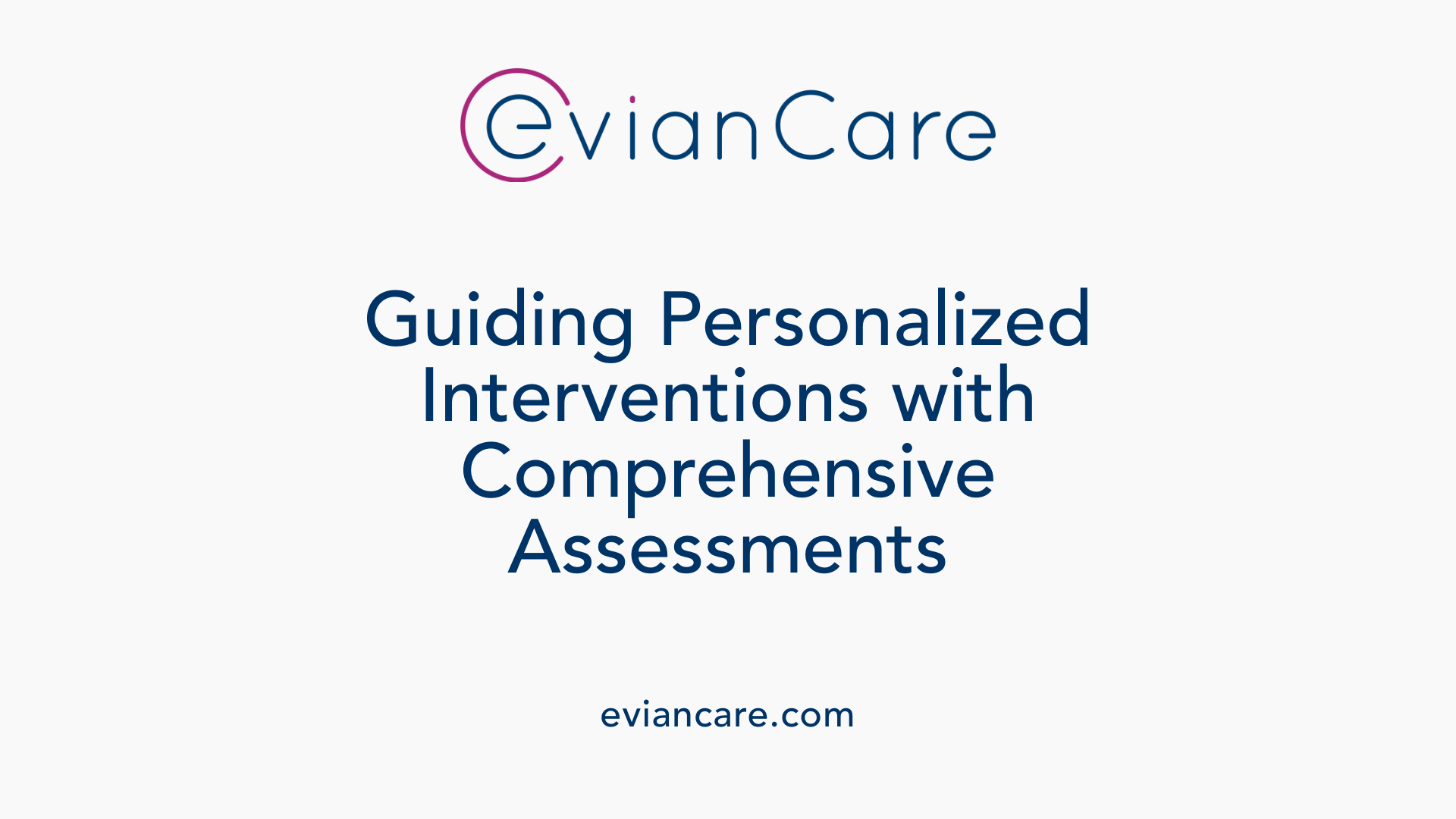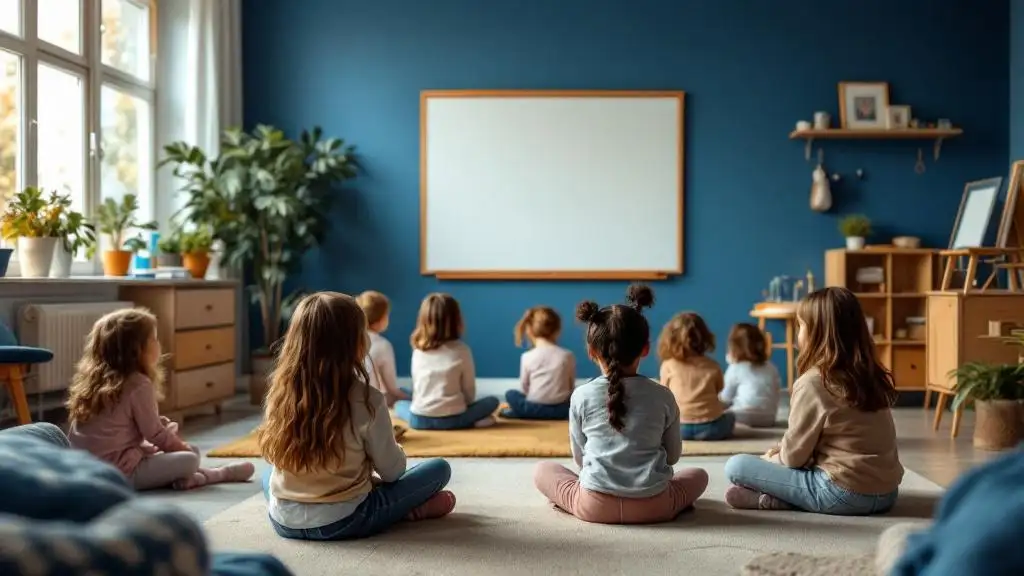
Understanding the Critical Role of OT in Children's Development
Occupational therapy (OT) is a cornerstone in supporting children with disabilities to develop essential skills for daily living, participation, and overall well-being. Its focus on functional activities, tailored interventions, and collaborative approaches helps foster independence, social integration, and improved quality of life for young children facing physical, cognitive, sensory, and emotional challenges.
The Evolution and Foundations of Occupational Therapy in Pediatric Care

What is the role of occupational therapy in supporting daily living skills in children with disabilities?
Occupational therapy is essential in helping children with disabilities develop the skills needed for daily life. It addresses physical, sensory, cognitive, and social-emotional needs to foster independence and active participation.
OT practitioners create individualized, play-based plans to teach important tasks like dressing, grooming, feeding, and moving around safely. They use modifications, adaptive devices, and specialized strategies to make activities manageable and enjoyable.
Beyond functional skills, therapists focus on improving fine and gross motor abilities, sensory processing, emotional regulation, and social interaction. These improvements support children in engaging fully at school, home, and community activities.
collaboration is a core part of occupational therapy. OTs work closely with families, teachers, and health professionals to adapt environments and activities, ensuring children can participate meaningfully in everyday routines.
The main goal of OT is to empower children by building confidence and independence. Through tailored interventions, children learn to manage daily tasks, develop social skills, and become active participants in their own growth and learning processes.
| Aspect of Intervention | Focus | Examples |
|---|---|---|
| Daily Living Skills | Self-care, mobility | Dressing, feeding, toileting |
| Motor Skills | Fine and gross motor | Manipulating objects, walking |
| Sensory Processing | Sensory regulation | Sensory diets, adapted environments |
| Social Participation | Interpersonal skills | Play, teamwork |
| Collaboration & Environment | Family and school | Home modifications, inclusive practices |
Occupational therapy adapts to each child's unique needs, promoting development and inclusion, leading to a better quality of life.
Evidence-Based Interventions that Promote Functional Gains

What are effective interventions and evidence-based practices in occupational therapy for children with disabilities?
Occupational therapy (OT) for children with disabilities emphasizes activity-based and participation-focused approaches. These 'top-down' strategies prioritize helping children engage in meaningful daily activities such as play, self-care, social interaction, and learning.
Research and systematic reviews support several specific interventions that demonstrate strong effectiveness. Goal-Directed Training, Constraint-Induced Movement Therapy (CIMT), and the Coach-Operated Neurodevelopmental Protocol (CO-OP) are prominent examples. These interventions involve structured, goal-oriented tasks that promote motor, cognitive, and social skills in real-life settings.
Behavioral approaches such as Applied Behavior Analysis (ABA) and Triple P (Positive Parenting Program) are supported for children with autism and behavioral challenges. Cognitive interventions like Cog-Fun and the Cognitive-Behavioral Approach to Perception and Sensory (CAPS) focus on improving executive functioning, sensory processing, and self-regulation.
Family-centered care, which involves active partnership with parents through education and training, enhances therapy outcomes. Delivering interventions in natural environments—homes, schools, and community settings—maximizes relevance and motivation.
High-quality evidence underscores that intensive, consistent, and engaging activities that are tailored to the child's goals produce meaningful functional gains. Incorporating motivation, repetition, and real-world application is essential.
Conversely, sensory integration therapy, despite its popularity, lacks sufficient evidence for supporting its effectiveness and is generally not recommended based on current research findings.
In summary, the most effective OT practices involve activity-driven, individualized, and family-involved interventions, with an emphasis on real-life participation and evidence-based strategies.
| Intervention Type | Focus Area | Supporting Evidence |
|---|---|---|
| Goal-Directed Training | Motor, cognitive, daily activities | Strong evidence for improving independence and skills |
| Constraint-Induced Movement Therapy (CIMT) | Upper limb function | Solid research backing for motor improvements |
| CO-OP | Cognitive-motor skills | Evidence for enhancing problem-solving and task mastery |
| Family-centered care | Overall participation and development | Proven to boost outcomes through active parent involvement |
| Behavioral interventions (ABA, Triple P) | Behavior management, social skills | Validated for autism and behavioral issues |
| Cognitive approaches (Cog-Fun, CAPS) | Executive functions, sensory processing | Supported for improving cognitive and sensory skills |
Find more established practices by searching for "Evidence-based pediatric OT interventions".
How Occupational Therapy Fosters Inclusion and Social Participation

How does occupational therapy promote inclusion for children with disabilities?
Occupational therapy (OT) plays a vital role in helping children with disabilities participate fully in their daily lives, including social, educational, and community activities. By supporting the development of skills such as communication, self-care, and social interaction, OT encourages children to engage more confidently with peers and adults.
Therapists use natural environments—like schools, parks, and homes—to promote inclusive participation. They design activities that are meaningful and motivating, tailored to each child's unique needs and interests. This child-centered approach fosters independence and self-advocacy, allowing children to navigate social settings comfortably.
Moreover, OT practitioners apply universal design principles to create accessible, inclusive environments. This includes making physical spaces more navigable with ramps or sensory-friendly areas, and adapting activities with tools or modifications so all children can participate equally. OT also emphasizes collaboration with educators, families, and other professionals, employing multidisciplinary strategies to support children across different settings.
Ultimately, occupational therapy helps children with disabilities build social skills, learn cooperative play, and pursue their interests alongside peers. By doing so, it reduces feelings of isolation and promotes a sense of belonging—crucial for healthy development and well-being.
Supporting social skills and peer interactions
OT interventions include activities like role-playing, social stories, and peer-mediated interventions that enhance social competence. These strategies improve skills such as sharing, turn-taking, listening, and understanding social cues.
Universal design principles and environmental modifications
Implementing universal design makes environments accessible for all children. Examples include adjustable furniture, visual cues, bright signage, and sensory-friendly zones that accommodate diverse sensory needs.
Collaborative, multidisciplinary inclusive strategies
OTs work closely with teachers, speech therapists, psychologists, families, and community members to develop individualized plans. This team-based approach ensures comprehensive support, addressing physical, cognitive, and social-emotional barriers to inclusion.
| Strategy | Description | Setting | Benefits |
|---|---|---|---|
| Peer interaction facilitation | Activities like social stories, role-playing, group games | Schools, community centers | Improves social skills, fosters friendships |
| Environmental modifications | Ramps, sensory zones, adaptive tools | Homes, schools, public areas | Enhances accessibility, reduces participation barriers |
| Collaborative planning | Interdisciplinary team meetings | All environments | Ensures holistic, individualized support |
By integrating these approaches, occupational therapy significantly enhances the inclusion of children with disabilities, enabling them to participate actively and confidently in all areas of life.
Specific Approaches for Children with Cerebral Palsy and Intellectual Disabilities

What are occupational therapy approaches for children with disabilities such as cerebral palsy and intellectual disabilities?
Occupational therapy (OT) strategies are tailored to each child's unique needs, aiming to improve daily functioning, independence, and participation in activities. For children with cerebral palsy, interventions focus on enhancing movement and posture through motor development techniques such as neurodevelopmental treatment (NDT), sensory integration, and the use of adaptive equipment.
Therapists employ a variety of methods, including strengthening exercises, coordination activities, and sensory processing strategies to address challenges like muscle tone and joint stability. Adaptive tools like splints, communication devices, and environmental modifications support task completion, whether it's dressing, feeding, or self-care.
Children with intellectual disabilities benefit from OT approaches that emphasize developing learning strategies, perceptual processing, and adaptive techniques. These methods help improve cognitive skills, emotional regulation, and social participation.
Collaboration with families and multidisciplinary teams ensures that each child’s therapy plan is customized. The goal is to foster skills across multiple environments—home, school, and community—allowing children to achieve greater independence and quality of life.
The Role of Developmental and Sensory Assessments in Planning Therapy

What is the evaluation process in occupational therapy for children with disabilities?
The assessment process in pediatric occupational therapy is essential for understanding a child's unique strengths and challenges. It starts with comprehensive evaluations of fine motor skills, gross motor skills, sensory processing, cognitive abilities, and behavioral habits. Therapists observe and measure these areas to determine the child’s developmental profile.
This collected information helps in creating tailored intervention plans that address specific needs. For example, a child with sensory processing issues might benefit from sensory integration activities, while one with fine motor delays might need handwriting exercises.
Therapists often work in various environments, including schools, homes, and clinics. This multi-setting approach ensures that interventions are practical and relevant to the child's daily routines and environments.
Reevaluations are conducted every six to nine months. These follow-up assessments track progress, determine if goals are being met, and help therapists make necessary adjustments to the therapy plan. This ongoing process ensures that interventions remain aligned with the child's evolving needs and developmental progress.
By systematically assessing and reassessing, occupational therapists can effectively support children in developing skills for independence, social participation, and daily life activities, ultimately promoting optimal growth and well-being.
Supporting Families and Educators in Child Development

How can parents and educators support children with disabilities through occupational therapy?
Parents and teachers play a crucial role in fostering a child's development through occupational therapy. Early signs such as developmental delays or sensory processing issues should prompt parents to seek professional assessment. Once a child is identified as needing support, finding a qualified pediatric occupational therapist involves referrals, checking the therapist’s experience, and understanding their treatment approach.
Occupational therapy services are customized to meet the child's age and needs. They focus on improving skills related to play, learning, daily routines, and social interaction. Especially in early childhood settings, OTs help children develop self-care skills, strengthen independence, and promote social inclusion.
Effective support depends heavily on collaboration. Parents, educators, and multidisciplinary teams must work together to create supportive and inclusive environments. Through joint planning, they develop individualized strategies to help children succeed academically and socially.
Beyond professional interventions, parental education and training are vital. Teaching parents specific techniques and strategies allows them to reinforce therapy goals at home. This consistency enhances progress, boosts children’s confidence, and encourages ongoing development.
In summary, supporting children with disabilities through occupational therapy involves a combination of tailored services, collaborative teamwork, and active parent involvement. These efforts help children improve their skills, participate fully in daily activities, and reach their potential.
Integrating OT in Educational Settings and Creating Supportive Environments
 Collaborative team approaches in schools are essential for effectively supporting children with disabilities. Occupational therapists often work alongside teachers, school psychologists, speech therapists, and families to develop and implement individualized education plans (IEPs). This team-based approach ensures that interventions are tailored to each child's unique needs and promote meaningful participation in classroom activities.
Collaborative team approaches in schools are essential for effectively supporting children with disabilities. Occupational therapists often work alongside teachers, school psychologists, speech therapists, and families to develop and implement individualized education plans (IEPs). This team-based approach ensures that interventions are tailored to each child's unique needs and promote meaningful participation in classroom activities.
Adapting classroom activities and environment is a core part of occupational therapy's role in education. Therapists assist in modifying tasks, providing accommodations, and implementing strategies that help children engage fully. This might include using visual cues, adaptive tools, or sensory breaks to support attention, motor planning, and sensory regulation.
Universal design and accommodation for diverse learners aim to create inclusive environments where all children can participate safely and independently. This involves designing flexible classroom layouts, using adaptive technology like communication devices or ergonomic furniture, and applying universal design principles that benefit children with various abilities.
Research highlights several strategies for effective integration, such as sensory-friendly spaces, task analysis, and individualized supports. These approaches not only enable children with cerebral palsy, intellectual disabilities, or sensory processing issues to participate but also foster a positive and inclusive learning atmosphere.
| Approach | Description | Benefits |
|---|---|---|
| Team Collaboration | Multidisciplinary working groups | Consistent, tailored support |
| Classroom Modifications | Adapted activities, tools, and environment | Increased engagement and independence |
| Universal Design Principles | Inclusive, flexible environments | Benefits all learners and promotes equity |
Empowering Children and Building Inclusive Communities
Occupational therapy is integral in fostering the independence, social integration, and well-being of children with disabilities. Through evidence-based, personalized interventions across home, school, and community environments, OT supports skills development that enable children to participate actively in all facets of life. Greater collaboration among families, educators, and healthcare professionals further enhances these outcomes, creating inclusive settings where children thrive and reach their full potential.
References
- Effectiveness of paediatric occupational therapy for ...
- Inclusion of Children With Disabilities
- Occupational Therapy for Children with Physical Special Needs
- The Role of Occupational Therapy in Early Childhood ...
- Top Benefits of Occupational Therapy
- Occupational Therapy for Cerebral Palsy - Improve Daily ...
- The Role of Occupational Therapy in Early Childhood ...
- Effectiveness of paediatric occupational therapy for ...












